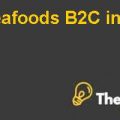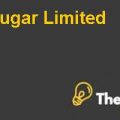Aramco
Saudi Aramco Oil Company
Introduction:
Saudi Aramco Oil Company formally known as Arabian American Oil Company is a national energy company, which is located in Saudi Arabia. The main productions of the company include: natural gas liquids, five levels of crude oil and gas. Over the past eight decades, it has made several improvements and it has become one of the world’s largest incorporated energy enterprises. The value of Aramco is guesstimated to be more than US$ 10 trillion by the end of 2014 that makes Aramco the world’s most priceless corporation.
The company has several gas plants and refineries that make ethanol, gasoline, LPG, naphtha and other products. The company is engaged in exporting its crude oil to almost all the energy companies in Saudi Arabia and to its tankers as well. The company is continuously looking for the opportunities to diversify its business portfolio in order to meet the international requirements in upstream and downstream activities.
The operations of the company include: refining, exploration, marketing, producing, distribution and chemicals that extent worldwide. Ministry of mineral resources and petroleum along with the supreme council for minerals and petroleum scrutinize all the operational activities of the company. Nevertheless, most of the operations are controlled by ministry than supreme council. The products and services offered by the company are utilized in the making of oil heating, gasoline, cooking gas and diesel fuel. It is further used in the range of different things that ranges from manure to helmets used in bikes to equipments used in cars to the ink that is used in printers. Roughly, about ten barrels of oil in the world comes from Saudi Aramco Oil Company.
Recent activities:
The company has largest crude oil reserves in the world that is nearly 260 billion barrels. Further, the production of the company is nearly 3.48 billion barrels annually. The company has more than 100 gas and oil fields in Dhahran that includes 285 trillion cubic of natural gas reserves. In addition to that, revenues of the company are found to be $182 billion with 12 million barrels of production every day. Currently, the company has around 55,440 employees with employee growth of 4.5% annually. The fields owned by Aramco are Ghawar and Shaybah that is one of the largest oil fields in the world.
The company is planning to acquire a chemical company that in turn will alter Aramco as one of the biggest producers of chemical in the world. The company is planning to produce 15 million tons of chemicals in coming 3 years and that in turn resulted in $30 billion revenues. The company is further seeking for acquisitions and mergers with other dominant players in the market. Aramco is aggressively engaged in inorganic growth for the company so as to exploit available opportunities.
Analysis and Application of concepts
Aramco is the national oil company of Saudi Arabia, which transport, develops and refines hydrocarbon on both national and international level. Being among the biggest oil companies across the world, they possess an extensive pool of employees, who are actually hired as a result of cross-functional team based approach in order to enhance the outcomes and to introduce technical improvements. Relating to the concept of six limitations to the successful workplace, Aramco’s strategy can be scrutinized and improved.
Six limitations to the successful workplace
This concept of six limitation has been taken from chapter number 1 of the book “four conversations” and page numbers are ranged in between 22-28. Being a part of such a gigantic organization, an individual always wishes to absorb a personal sense of achievement through appreciation and have the desire to take their team at new heights of success. As the cross-functional team based approach is appreciated so these six possible issues can limit an individual to achieve the desired success being the part of a team (Pajala, 2010). Engineers at Aramco work on cross-functional basis, which sometimes triggers different issues. These limitations also became an influencing factor for improving the field management practices through intelligent surveillance and other possible options.
• Lateness
Some people possess a habit of coming late. For example, a chemical engineer at Aramco may be late for project planning meetings, which make the whole team suffer from a problematic situation. Although being late reflects personal laziness of an individual but it later on, specifically in the cross-functional team may result in serious delays for the entire team and project (Ford, 2009).
• Poor Work Quality Poor Work Quality
For example a person in a Geo-technical team at Aramco completes his work before the deadline, which may lead to poor work quality occasionally. When sometimes work fails to meet the desired standards so each and every member of a team suffers being on the cross functional level. In order to make that work error free.................
This is just a sample partial case solution. Please place the order on the website to order your own originally done case solution.












